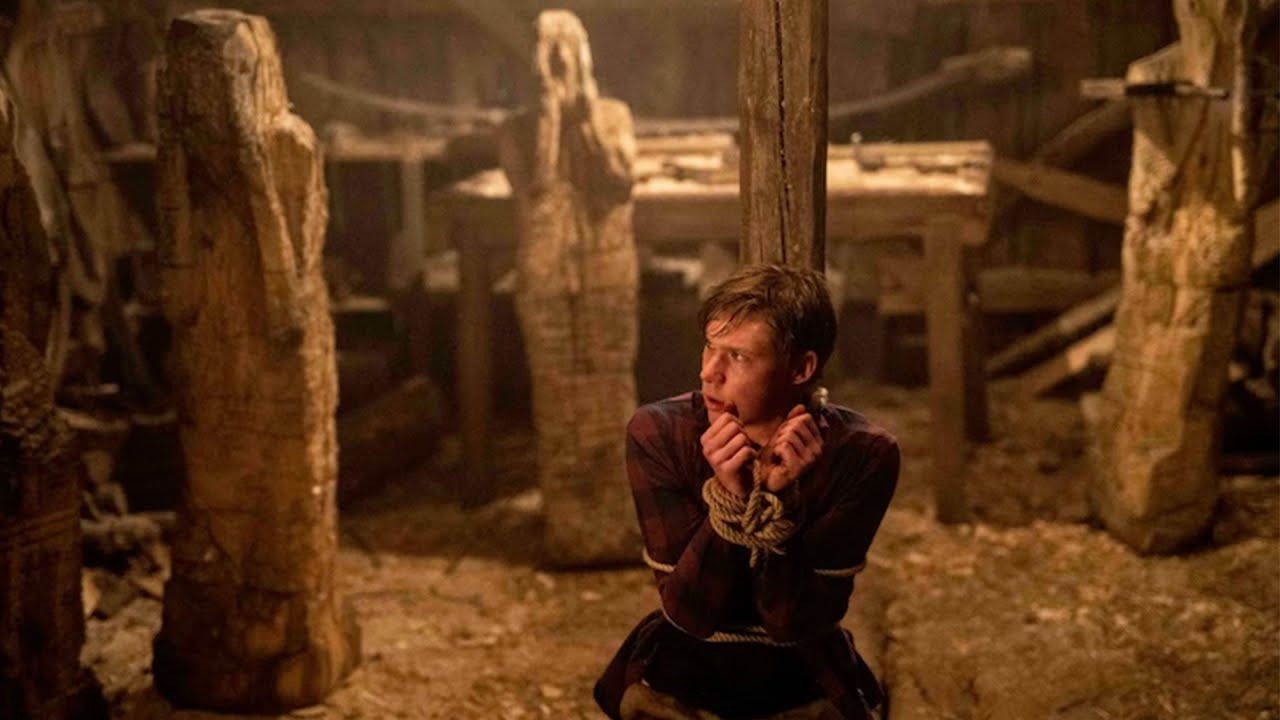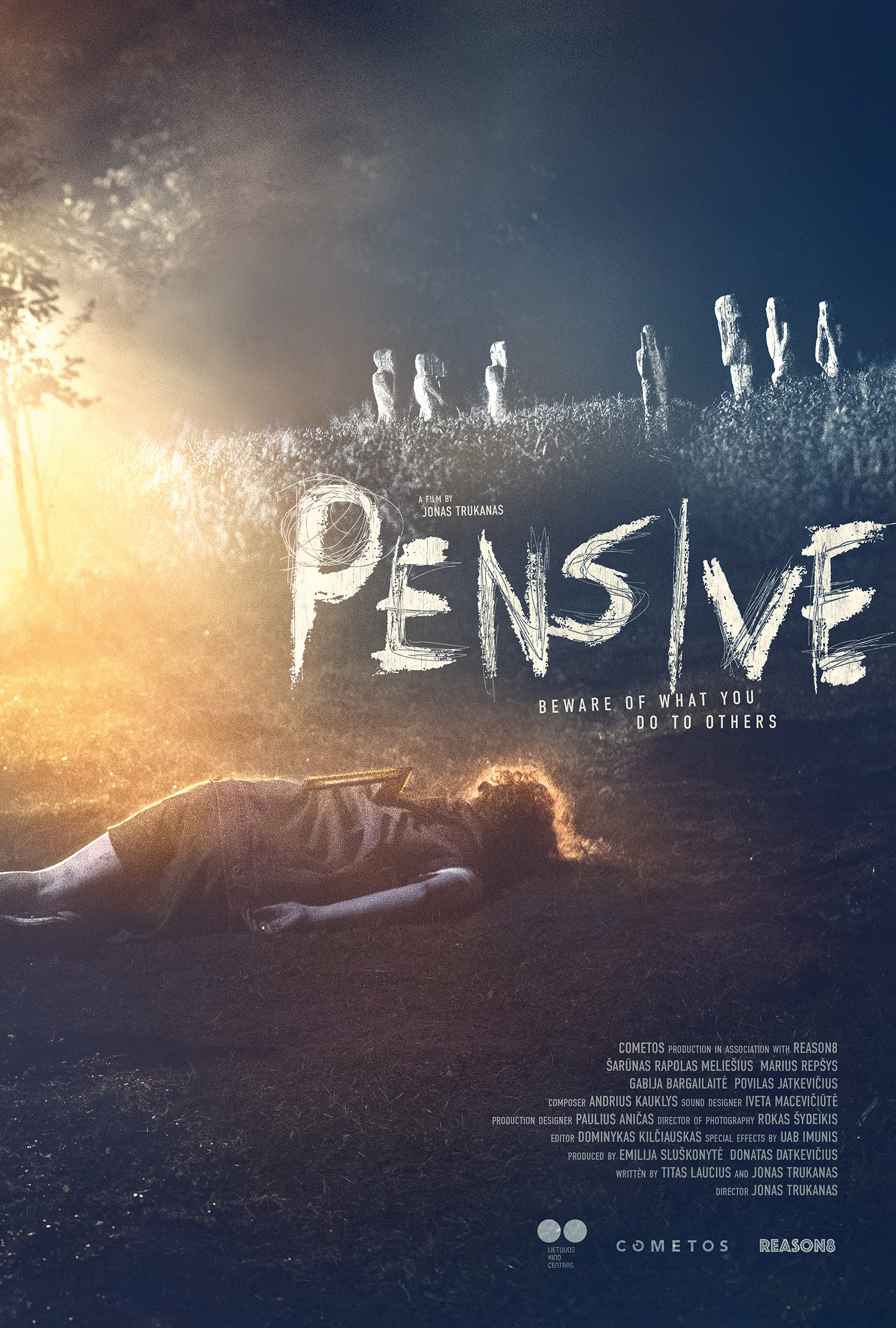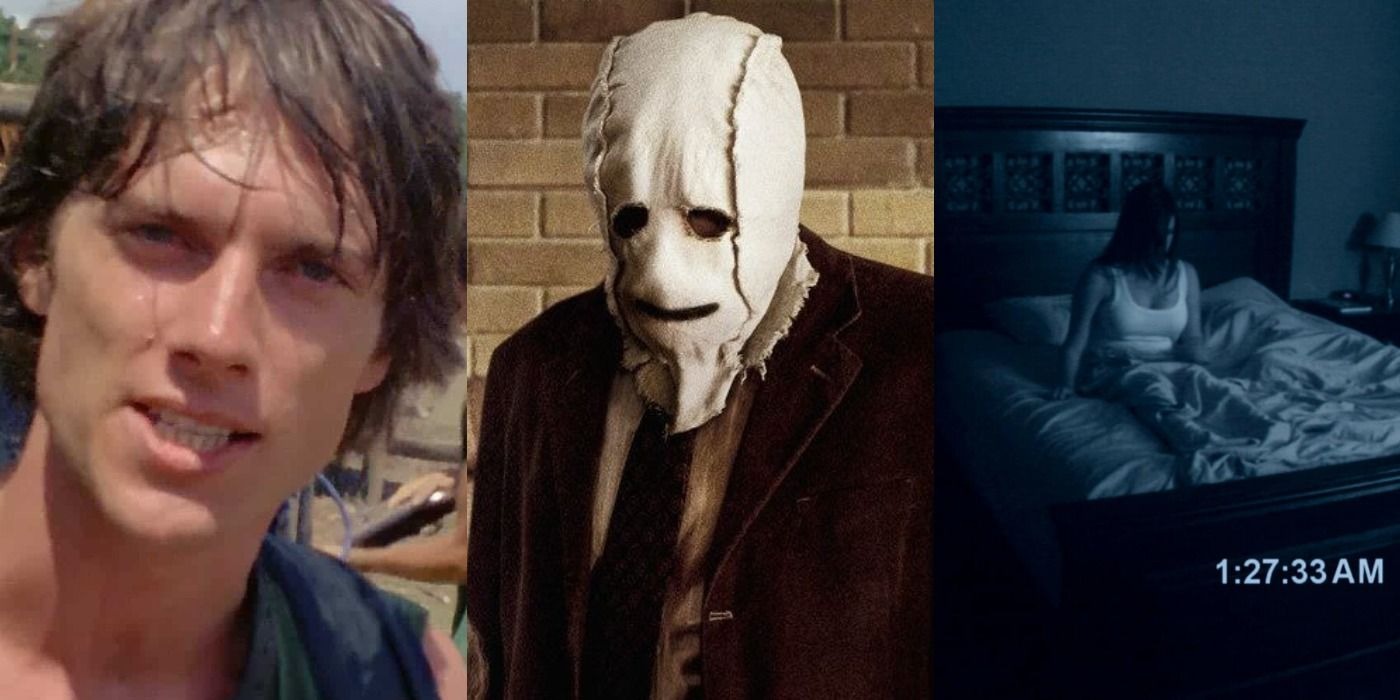A chilling story plays in Pensive, a 2022 film directed by Jonas Trukanas, where a group of teenagers sets out on a graduation trip to an abandoned cottage adorned with eerie wooden sculptures.
What starts as a moment of joy before they each go their separate ways soon turns into a terrifying ordeal. The mood switches dramatically when sinister events begin to occur, leading to horrifying deaths among the students.
Trukanas expertly blends suspense and horror, weaving a slasher tale filled with unexpected and gruesome twists. Pensive delivers an unsettling experience that lingers with its audience, leaving behind an unforgettable sense of dread.

Why Did Marius Choose to Celebrate at an Abandoned Cottage?
Marius, one of the central characters, grapples with disappointment and the pressure of parental expectations as graduation day arrives. He is burdened by the frustration of not achieving valedictorian status and the weight of his family’s desire for him to pursue a career in risk insurance.
While his classmates rejoice in their accomplishments, Marius struggles with feelings of inadequacy and the societal push toward conventional success.
His emotional turmoil fuels a need to break away from these pressures, leading him to organize a celebration in a secluded setting. To him, the abandoned cottage represents a chance to escape the rigid expectations placed upon him and his friends before they go on their different life paths.
By inviting his peers to this mysterious location, Marius hopes to create a unique farewell experience. His decision to hold the party there carries a deeper meaning, serving both as a personal rebellion against societal norms and a moment of unity with his friends before they move on with their lives.
What Triggers the Start of the Terrifying Events at the Party?
Marius and his friends step into a dangerous situation without knowing the grim history surrounding the cottage. From the very beginning, concerns arise over the safety of the venue, yet these warnings go unheeded in the excitement of the celebration. Marius himself shows little regard for these risks, brushing off questions about the power outage and the legitimacy of their gathering.
On the way to the location, a classmate recounts the disturbing past of a family that perished in the area, leaving behind unsettling wooden sculptures. The only surviving member, the father, was said to have devoted himself to carving eerie figures in memory of his lost loved ones.
Despite some members of the group expressing unease over partying in such a place, the thrill of the unknown proves too tempting to resist. Limited mobile network coverage, the uncertainty of the cottage’s ownership, and the difficulty of locating it contribute to a growing sense of isolation.
As they settle in, the ominous signs—such as keys covered in earthworms and the presence of unsettling wooden carvings—do little to deter the group from indulging in the festivities. The overwhelming desire to enjoy the night blinds them to the potential dangers lurking around them.
How Do Marius’ Choices Influence the Dire Situation?
Once intoxicated, Marius and his friends engage in reckless behavior, which includes vandalizing the wooden sculptures scattered around the cottage grounds.
A brief moment of responsibility flashes through Marius as he tries to contain the destruction, but the chaos quickly escalates beyond his control. The night takes a horrifying turn when several students meet a brutal fate inside a sauna, trapped alongside one of the sculptures.
Accusations begin to surface, with Marius receiving the brunt of the blame for failing to warn the group about the possible dangers associated with the cottage. The situation spirals further when Laima, covered in blood, reveals that her partner Modes remains outside and that a masked figure is now hunting them.
Panic sets in as the masked killer begins his merciless attack, leading to the deaths of Modes and several others. The group’s attempts to flee prove futile as their assailant relentlessly tracks them, executing his victims with disturbing precision.
One of the most gruesome moments comes when the killer forces a victim’s head through a glass window. As the horror plays, Marius, Vytas, and Brigita manage to escape by boat, marking a crucial turning point in the film.
The trauma of the night leaves a lasting impact, with Marius’ choices and lack of foresight being scrutinized by the survivors. The revealing carnage results from a combination of the group’s ignorance, Marius’ misjudgments, and the ruthless nature of their masked pursuer, creating a film filled with relentless tension and fear.
How Does Marius Change Throughout the Tragic Events?
Marius undergoes a dramatic transformation as he moves from being weighed down by expectations to a person forced into survival mode. At the start of the film, his character is defined by self-doubt and disappointment. However, as the horror intensifies, his survival instincts take over, forcing him to confront the masked killer head-on.

Throughout the night, his personality evolves, no longer passive but instead taking decisive actions to protect himself and those around him. His growth is especially evident in moments where he clashes with his peers yet refuses to succumb to fear. A pivotal moment occurs when he confesses his feelings for Brigita, only to face rejection.
This rejection, combined with the insults hurled at him and his growing sense of alienation, fuels a deep resentment within him. In a fit of anger and despair, he smashes the wooden sculptures, venting his frustrations in a destructive outburst.
The masked killer soon targets Marius directly, leaving him wounded and unconscious. Upon regaining consciousness, he finds himself in a room with a burnt corpse while the masked figure chants ominously around him.
When Saule unexpectedly intervenes and rescues him, Marius seizes the chance to escape. His determination becomes clear in his decision to set the cottage ablaze, an act that symbolizes him reclaiming control over his fate.
This action, driven by both necessity and a desperate bid to free himself from the nightmare, marks the final stage of his transformation. The inferno serves as both a means of survival and a statement of defiance against the terror that has consumed the night.
Only Marius, Saule, and Vytas make it through the ordeal alive, but the trauma leaves permanent scars. As the night draws to a close, Vytas meets a tragic fate, which leads to a disturbing moment where Marius, overwhelmed by paranoia, pushes Saule off a cliff when she attempts to blame him for everything that happened.
This act highlights the psychological toll of the night, showcasing how deeply the experience has affected him. The film’s final scene depicts Marius lying in a hospital bed, surrounded by reporters eager to hear his account of the events. Their questions about whether the night strengthened him leave the audience to ponder the lasting impact of his harrowing experience.
Pensive delivers a chilling portrayal of horror while simultaneously delving into the depth of human emotions and personal growth. The film weaves moments of brutality with psychological tension, using Marius’ evolution to highlight the impact of trauma and survival.
As the night progresses, the bonds between the characters are tested, exposing how fragile relationships can become in life-threatening situations. The relentless terror serves as a backdrop to a deeper exploration of isolation, resilience, and personal reckoning.
Through its eerie setting and unsettling atmosphere, Pensive paints a grim picture of horror, reminding viewers that the most terrifying experiences are not always external threats but the emotional and psychological battles that linger long after the nightmare ends.



